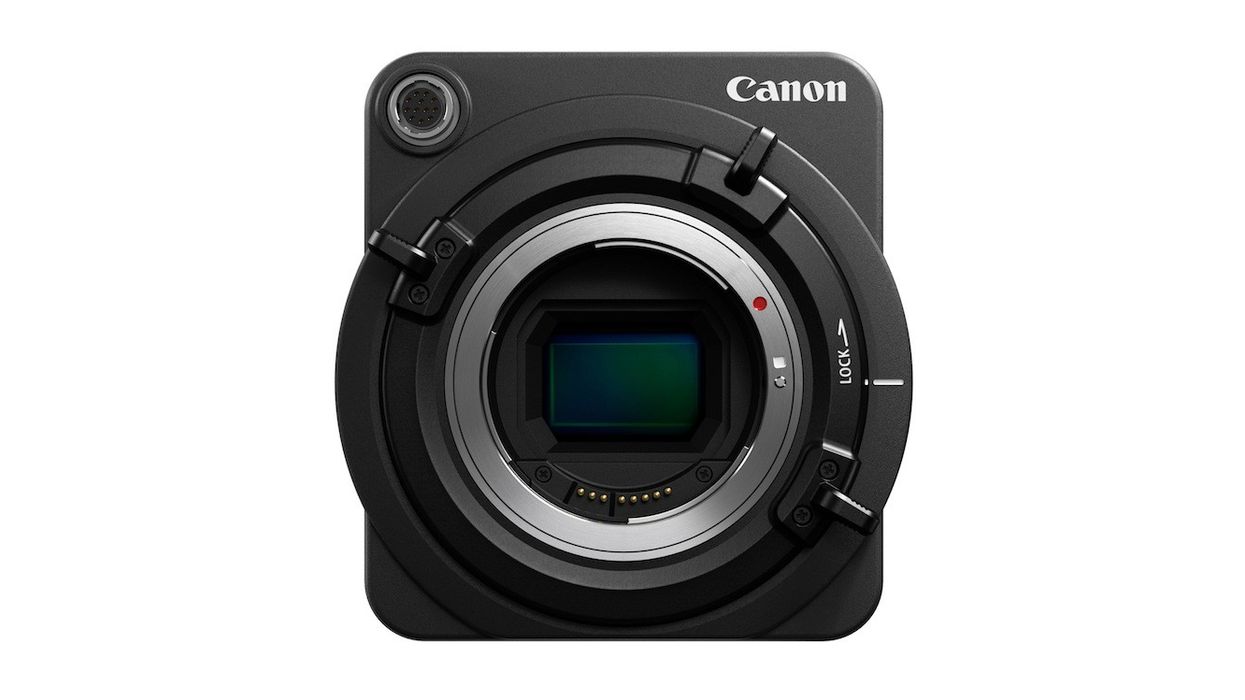Introducing Canon's New $5K Super 35mm Pocket Camera, the ME200S-SH
Just in time for NAB, Canon has announced the ME200S-SH, which is essentially the Super 35mm version of their ME20 low light camera with a whole bunch of exciting features.

Perhaps the first thing you'll notice about the ME200S-SH is its form factor, which is similar to that of the Alexa Mini, Blackmagic Micro Cinema Camera, and even Sony's new 4K action cam. This cube-shaped camera is small and lightweight enough for drone and gimbal users, but also powerful enough with features like a Super 35mm CMOS sensor, high dynamic range, and ISO up to 204,800 to provide broadcasters and feature filmmakers with great images.
Check out this B&H interview with Canon's Ken Rowe to learn more about the camera:
Features
- Super 35mm CMOS Sensor
- Canon Cinema Lock EF Lens Mount
- 12-Stop Dynamic Range
- ISO Up to 204,800
- 1920 x 1080 / 1280 x 720, Up to 60 FPS
- Dual Pixel AF
- Motorized ND and IR Cut Filters
- 2x, 4x, 8x Digital Teleconverter
- HD/3G-SDI & HDMI Connectors
- RS-422 Remote Control Terminal
The ME200S-SH certainly has some features that make it appealing to filmmakers, starting with its Super 35mm sensor, which is the same one in Canon's popular C-series. It does very well in low light situations thanks to its 12-stop latitude and an ISO that reaches 204,800. It also has several features that may make it faster and easier to work with, like its built-in filter stack (clear filter, ND 1/8, ND 1/64, IR cut filter), One-Shot Auto Focus, and Push Auto Iris, which quickly and automatically adjusts your aperture to maintain exposure.
But even though this camera has a bunch of great features, it definitely has its drawbacks. For one, it doesn't have a display and doesn't record internally — it's basically, as News Shooter puts it, "a sensor rather than a full camera." So this means that you'd have to include several add-ons to even use it. It also only records in HD, which might be a deal-breaker for some die-hard 4K shooters out there, unless they don't mind mounting an Atomos Shogun or Ninja to it. Furthermore, it's very much a multi-purpose camera, meaning that, yes, there's a little something for every kind of user, but only a little. It may not have many of the features you're looking for, and with a price of $5K you might feel the absence of those features a lot more than usual.
So, this little camera, which weighs about 2.5 lbs. might be ideal for drones and gimbals, or for documentarians who not only need something small and rugged that they can take pretty much anywhere, but also something that allows them to make quick adjustments on the fly.
The ME200S-SH is currently available for pre-order for $5000. There will definitely be a lot more information to share about it come NAB, so stay tuned.
Source: Canon


















